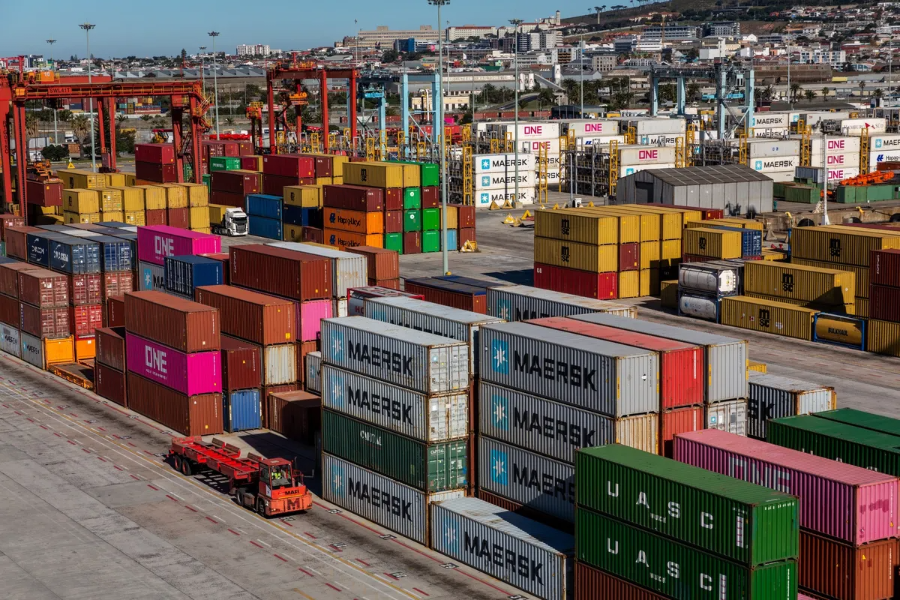
In the first seven months of this year, China’s exports to Africa rose by 25% year-on-year to USD 122 billion, far outpacing growth in many other major markets, while exports to the United States plunged.
This figure already exceeds China’s total exports to the continent in 2020 and is on track to surpass the USD 200 billion mark for the first time.
A STRONG SHIFT
“In recent years, Chinese exporters have acted very impressively in diversifying into emerging markets, including Africa. This year’s weaker renminbi has likely made Chinese exports more competitive in African countries,” commented Christopher Beddor, Deputy Director of China research at Gavekal Dragonomics, speaking to Bloomberg.
In fact, the US–China trade war has served as a catalyst for a surge in Chinese investment and trade in Africa, which has been booming for years, since the Belt and Road Initiative launched in 2013.
As Chinese firms have won contracts to construct everything from railways to industrial zones across the continent of 1.5 billion people, demand for machinery and materials to complete these projects has escalated.
Nigeria, South Africa, and Egypt are Africa’s largest importers of Chinese goods. Construction machinery recorded one of the strongest export growth rates to Africa in the first seven months, up 63% year-on-year. Exports of Chinese automobiles to the continent nearly doubled, while steel products grew by double digits. Yet Africa still represents only a modest share of China’s total exports—around 6%, roughly half that of the United States.
According to Beddor of Gavekal, some Chinese goods destined for the US may be rerouted through Africa—a tactic known as “transshipment.”.
Rising protectionism in Washington has also spurred African imports of Chinese goods. Products from over 30 African countries had previously enjoyed duty-free access to US markets under the African Growth and Opportunity Act; however, many of these items are now subject to tariffs under the Trump administration to curb transshipment.
Conversely, in June, President Xi Jinping pledged to remove tariffs on all African countries with which China has diplomatic relations. In the same month, Beijing allowed agricultural imports from Ethiopia, Congo, Gambia, and Malawi, bringing the total number of African countries with access to China’s market to 19.
INCREASING INFLUENCE IN AFRICA
In Africa, China can bring its industrial know-how and massive machinery to a continent struggling with outdated infrastructure and uneven development—less than half of its population has reliable electricity access.
According to a July report by Griffith University (Australia) and the Green Finance & Development Center at Fudan University (China), in just the first half of 2025, Africa signed USD 30.5 billion in construction contracts with China—five times that of the same period last year and the highest among all regions in the Belt and Road Initiative.
China also exports energy solutions such as solar and wind, as well as electric vehicles, which can help African countries overcome energy shortages while boosting Chinese imports aligned with their goals for energy independence and economic development, noted researcher Zhou Mi of the China Academy of International Trade and Economic Cooperation.
Beyond goods, China brings abundant financing to Africa. In recent months, the China Development Bank disbursed approximately EUR 245 million (USD 286 million) for a railway project in Nigeria and increased infrastructure lending in Egypt. China’s rising trade may also help promote greater use of the renminbi in African companies’ and governments’ balance sheets.
Nigeria, South Africa, Egypt, and Mauritius already have bilateral currency swap agreements with the People’s Bank of China (PBOC), while Kenya is negotiating to convert some dollar-denominated loans into renminbi to ease debt burdens. “Clearly China benefits when the renminbi is more widely used in financial systems. It’s an incentive for them to offer favorable terms when swapping debt into RMB,” said David Omojomolo, an African economist at Capital Economics. “I believe resource-dependent countries with high exposure to Chinese debt, like Angola, are likely to follow Kenya’s lead.”
Meanwhile, many Chinese-made goods prohibited or restricted in other markets face less resistance in Africa. Chinese exports of steel components used for bridges, towers, and scaffolding rose 43%, batteries jumped 41%, and electrical transformers and converters for industrial and household use increased nearly 25%.
In Africa, China has yet to encounter the intense backlash seen elsewhere, despite concerns about cheap Chinese imports undercutting domestic industries. That said, there remain risks, especially as worries grow that Africa could fall into a “debt trap” with China and that exports may displace local manufacturing.
Analysts, however, anticipate Beijing will act cautiously—Africa is not only a critical supplier of essential resources but also a growth market and a key arena for China’s global ambitions. “Africa is where China’s companies and brands go global. Here they gain experience, build markets, and earn recognition. This matters for Beijing’s efforts to lead global growth,” said Lauren Johnston, China-Africa specialist at Australia-based consultancy New South Economics.
Source: vneconomy.vn




